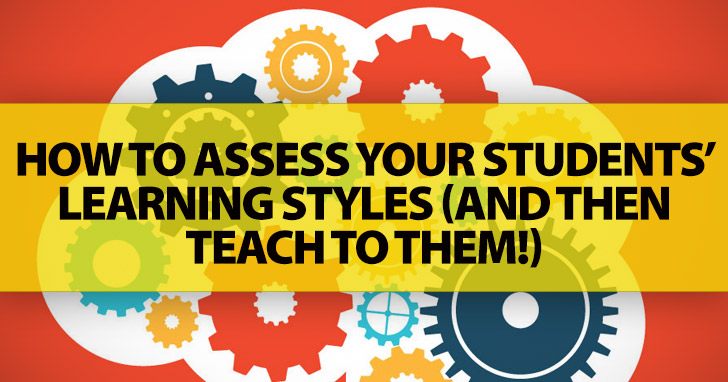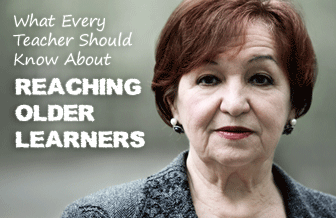This Might Make All the Difference in Your Classroom: Assess Your Studentsí Learning Styles


Whether you have a whole class of seniors or a few elder students sprinkled into your classes, you will want to take careful consideration of your older learners. They are a joy to teach and a welcomed addition into any classroom. Follow these tips and you will have a great time learning from, as well as teaching your older learners!

Older adults have a lot of life experience under their belts and also have well-developed learning strategies that have served them well in other settings. They can use these strategies to their advantage in language learning, too. As with all learners, you want to tap into their experiences and expand upon those whenever possible. Language learning should give older students the same safe environment in which to share their past and also learn from the others in the class. Teachers should be flexible enough to allow different approaches to the learning tasks inside the classroom. This also connects to their motivation. Older learners almost always have a very pointed reason why they are studying, and that reason will be their primary motivation. It is a good idea to get to know them and their story so that you have a good basis for what types of lessons and themes will attract their attention and motivation.
Older learners will bring a lot to your classroom, but you also need to be flexible and patient with their learning patterns and styles. They often prefer to be presented with fairly analytical formal grammar and need to be given a lot of controlled practice, before moving into more fluency-based communication activities. It may take seniors some time to adapt to spontaneous oral practice, and they may request a lot more explicit explanation and detailed grammar presentations. You will have to bend a bit more than usual to accommodate what works for them. Let them take a lot of notes and refer to them in practice. Also let them ask questions, but don’t let them dominate the entire class. You can guide them into the world of more laid-back learning, and chances are they will grow to appreciate it. It will take a conscious effort on your part to create a relaxed and informal learning environment to help them find their rhythm.
If you are big on constant error-correction, you may want to lighten that as well. Older learners are particularly sensitive to making mistakes and often don’t take too kindly to consistent error correction. They can actually be too hard on themselves and may exhibit perfectionist tendencies about minor grammar errors. Older learners often have not spent much time in a modern classroom. When they were in school things were very different, and this may be their first classroom experience in several years. Seniors are generally accustomed to very rote learning, little oral practice and much more written proof of their skills. They generally aren’t used to being corrected in front of a group, and even if your style is unobtrusive, give them time to acclimatize to this type of correction.
A good way to avoid error-correction awkwardness is to provide opportunities for learners to work together, focusing on understanding rather than producing language. You can also reduce the focus on error correction in order to build learners' self-confidence and promote language learning. Teachers should emphasize the positive and focus on the good progress learners are making. Provide opportunities for them to be successful and to show off their success.
You’ll want to be aware of the challenges that your older learners are facing. Also realize that their challenges may be different from other students in the class. One of the common challenges is serious health or personal issues. If this is the case do your best to accommodate them, listen to them if they are willing to share, and help the class become a support system for the student. Other health problems may be less dire, like mild vision impairment or hearing difficulties. Those you can easily accommodate in your classroom by simply giving them a seat close to the board, providing handouts (with large fonts) in addition to oral instructions. If their personal issues or ailments impede their attendance try to be understanding and flexible.
Another challenge seniors may be up against is feeling lonely or disconnected from society. If this is the case, often the class is their connection to other people and to new and interesting things. There’s not much to do here but be aware of their situation, offer support and understanding, and provide the sense of community that they are looking for.
Their self-directedness, life experiences, and motivation are a great addition to any classroom. They will be successful especially if you get to know them and sustain an environment where all the learners in the class get what they need, delivered to them in the way that they need it.